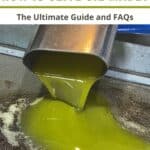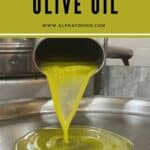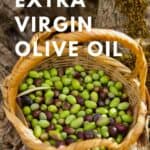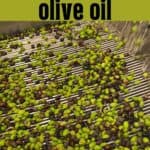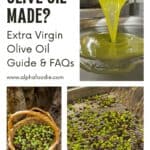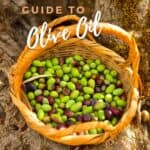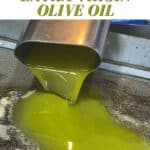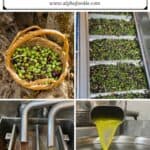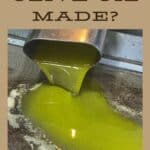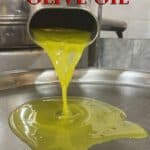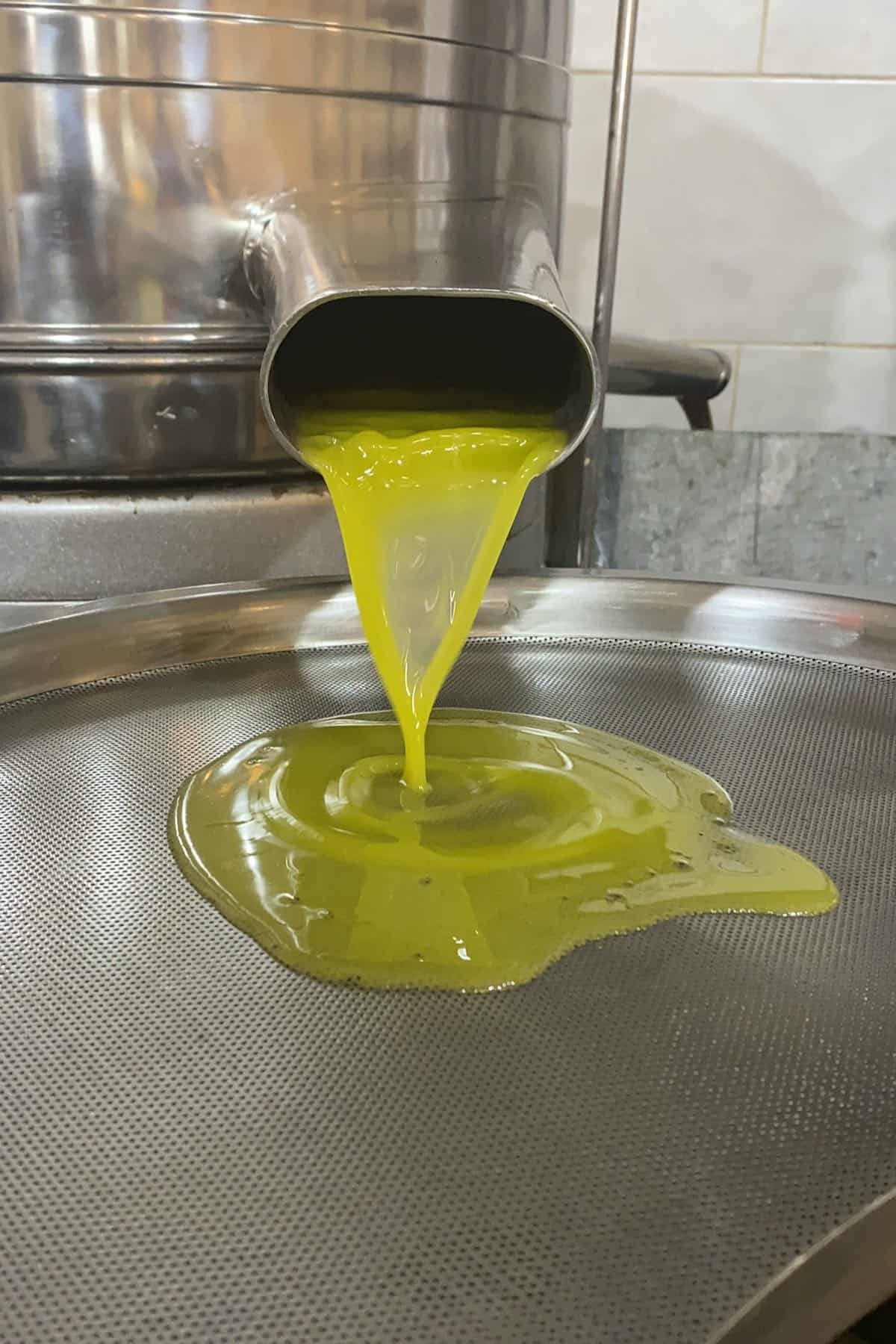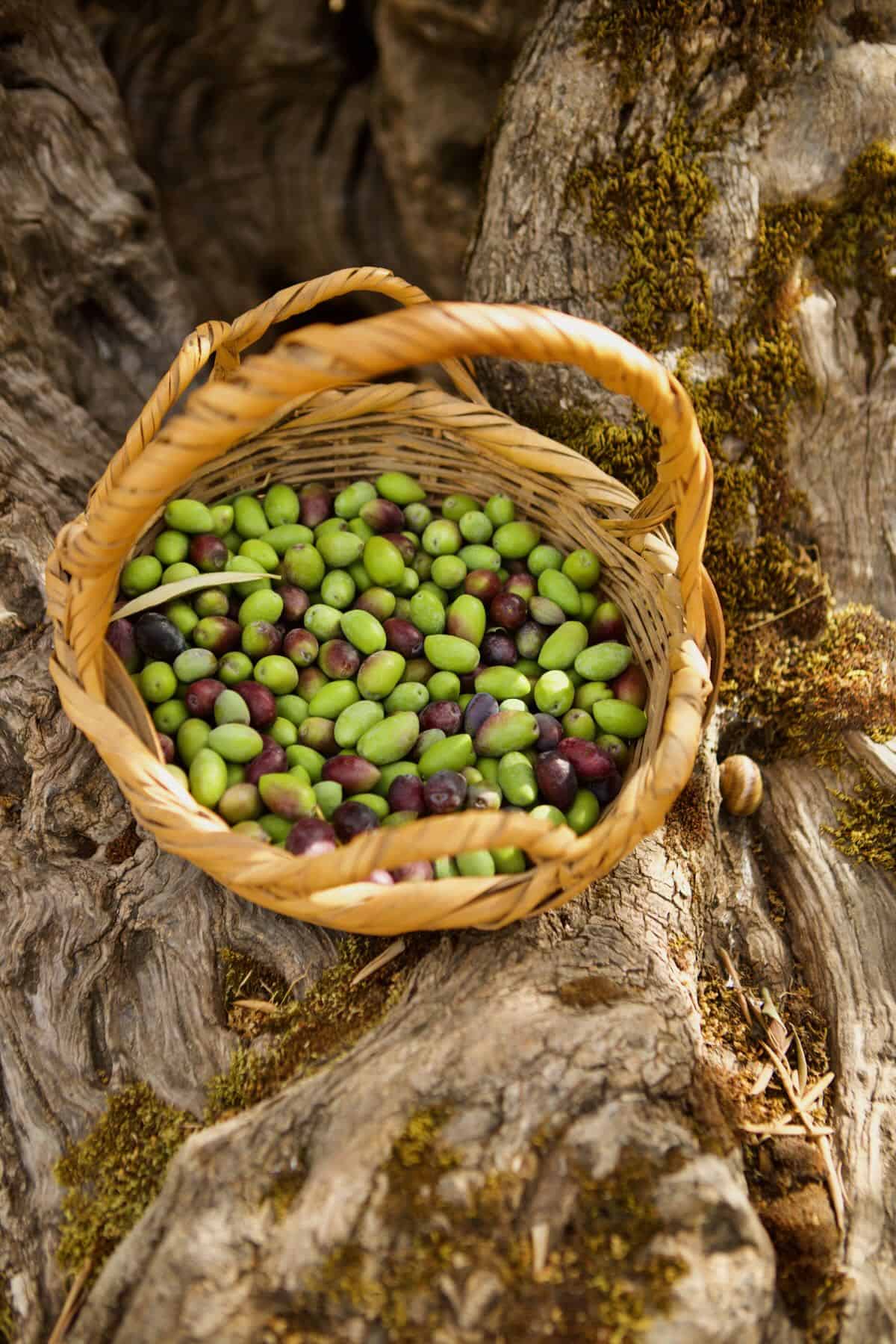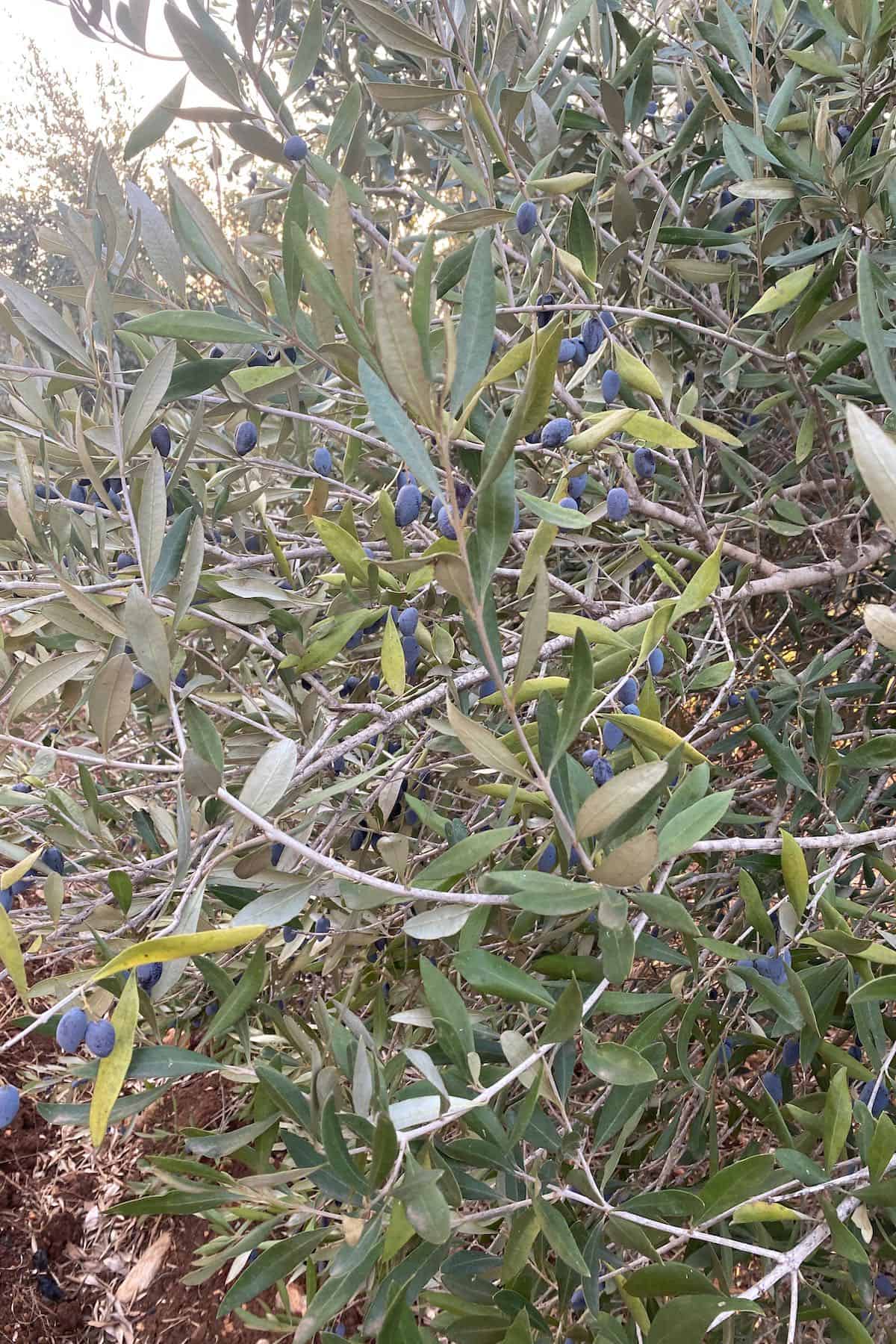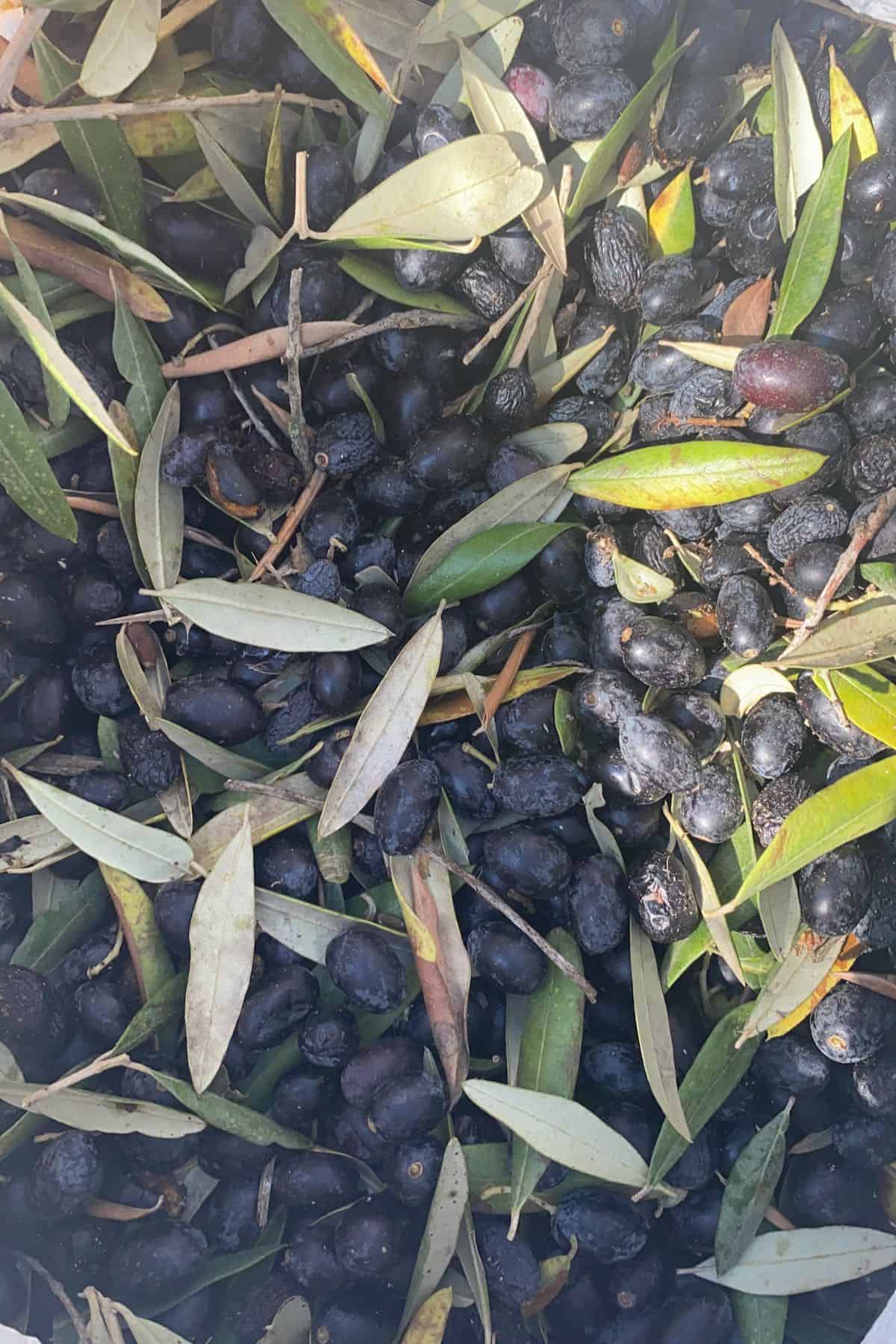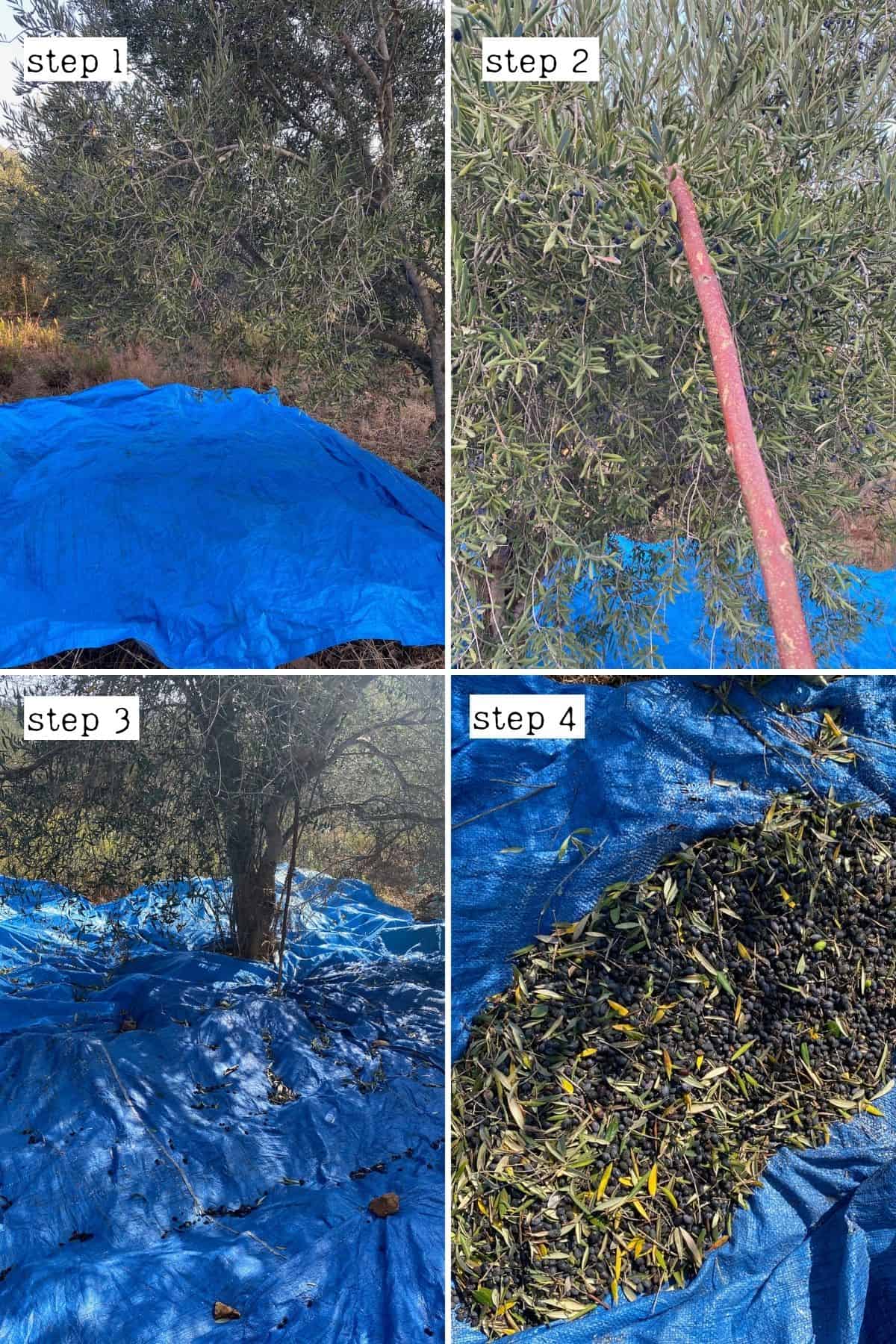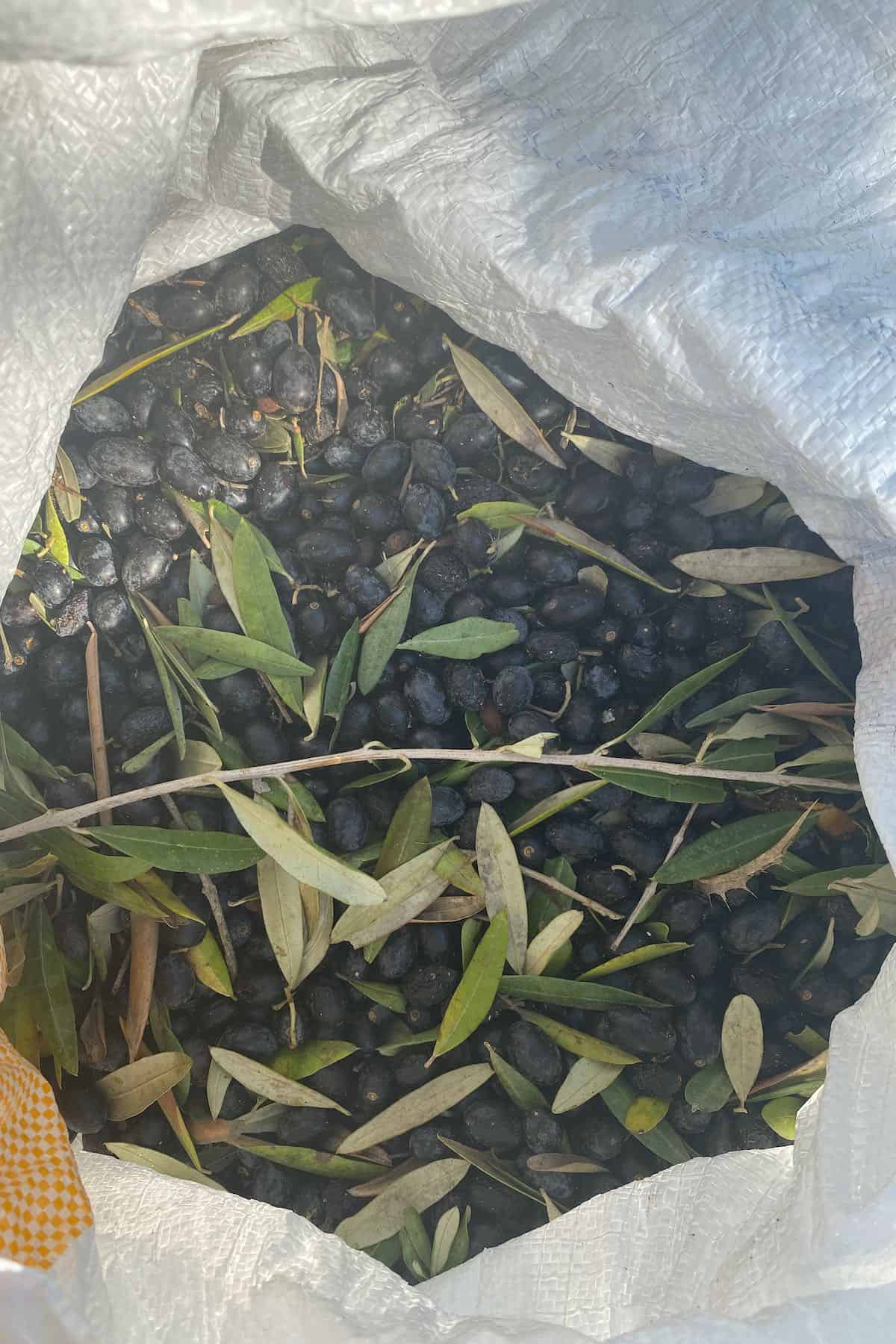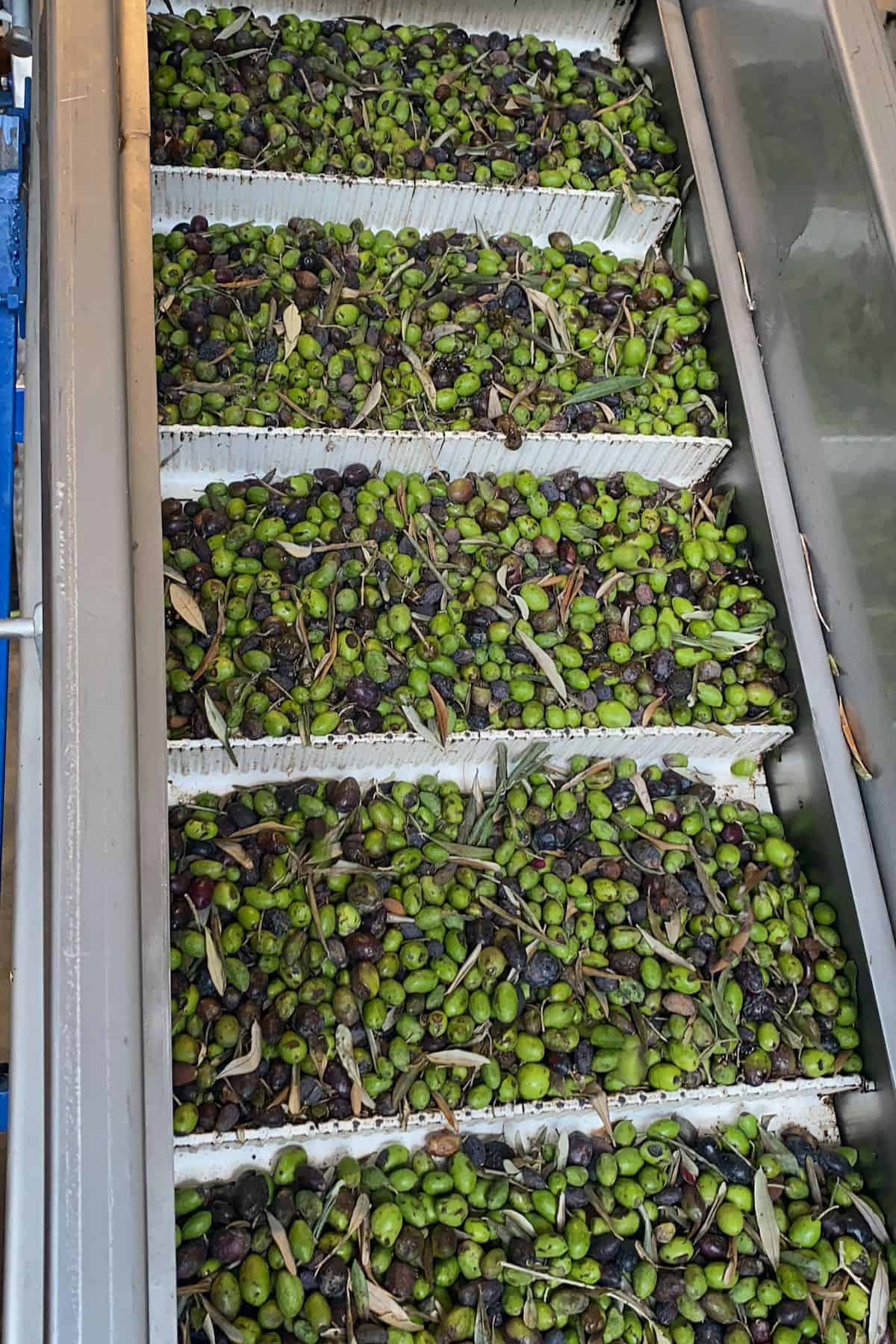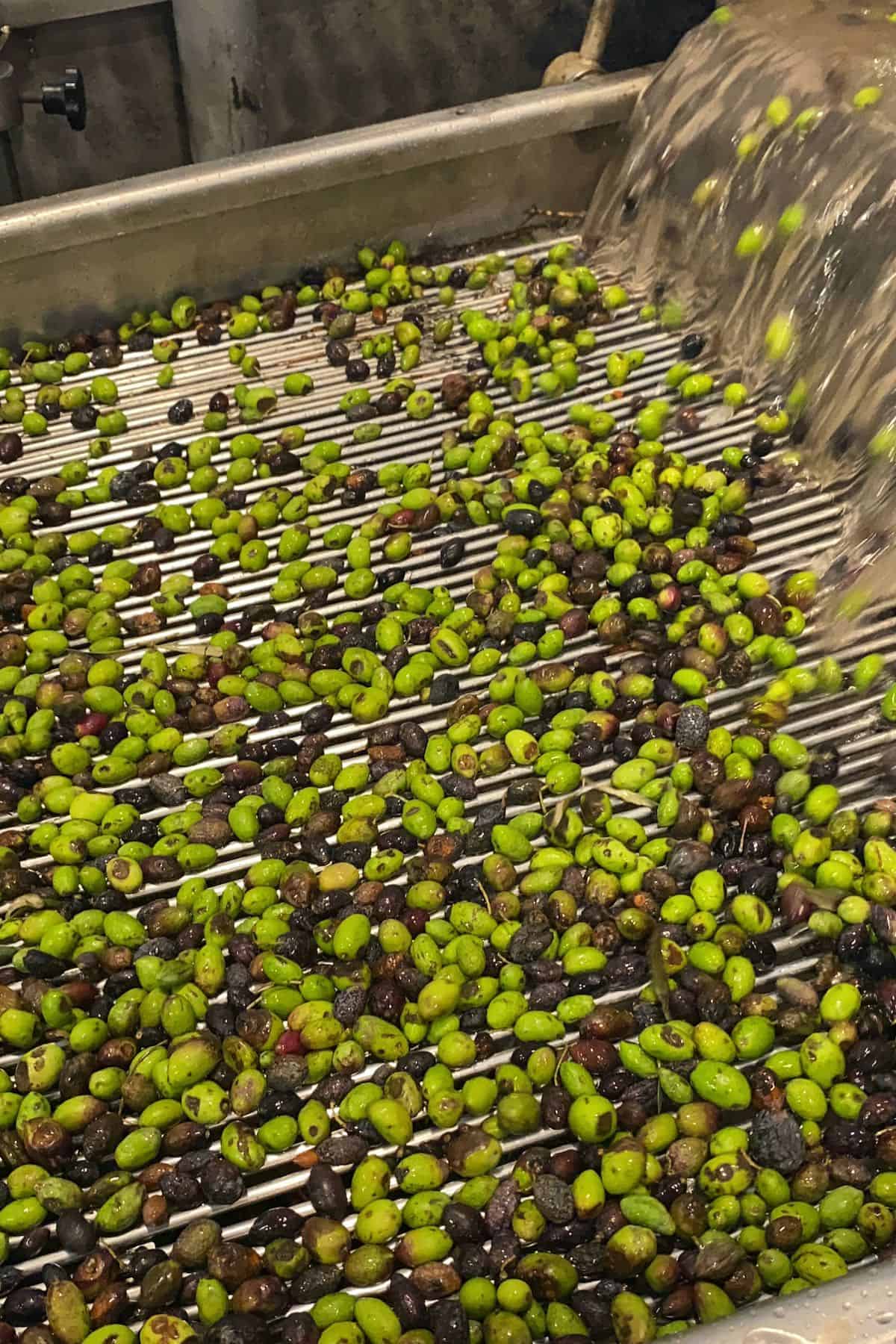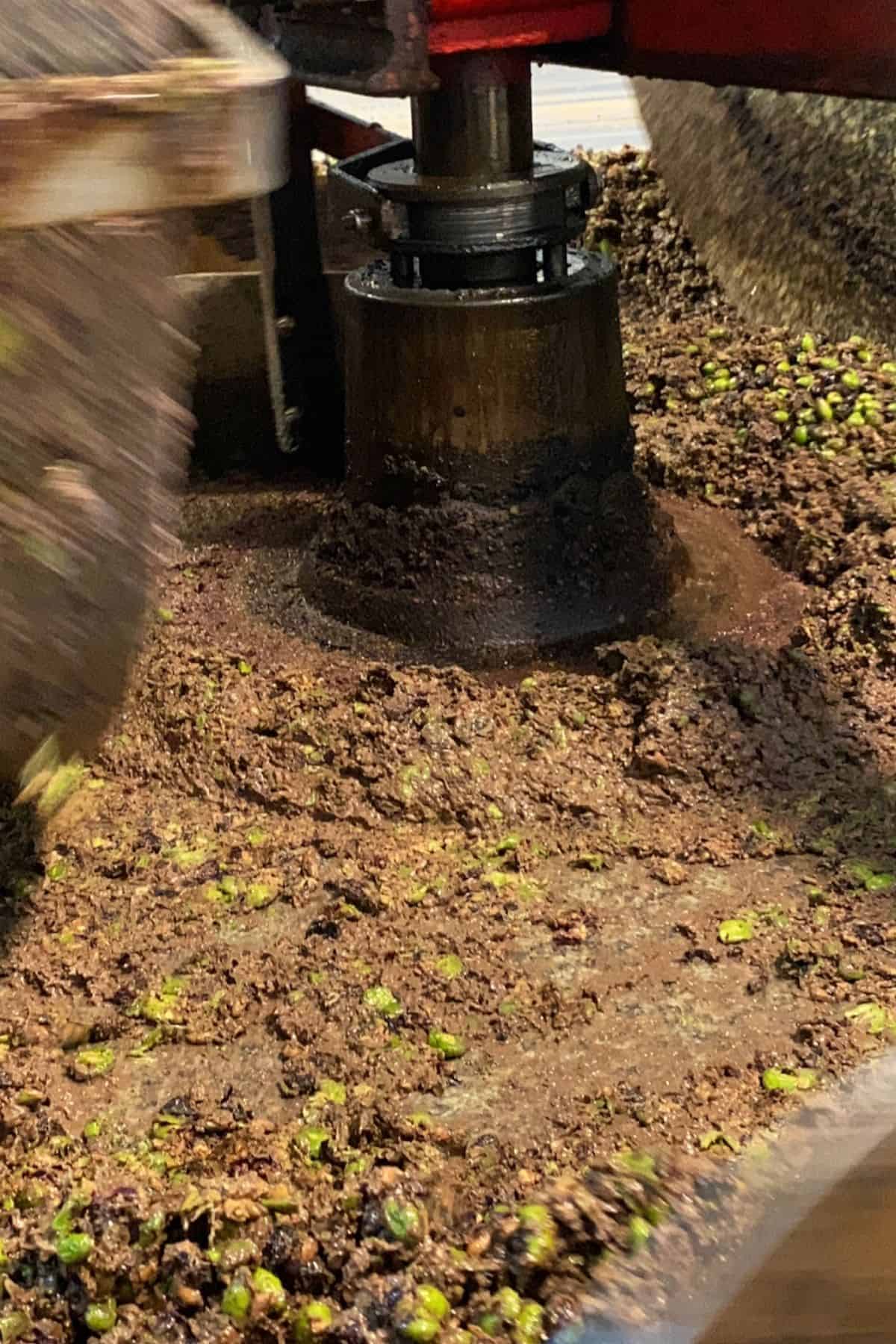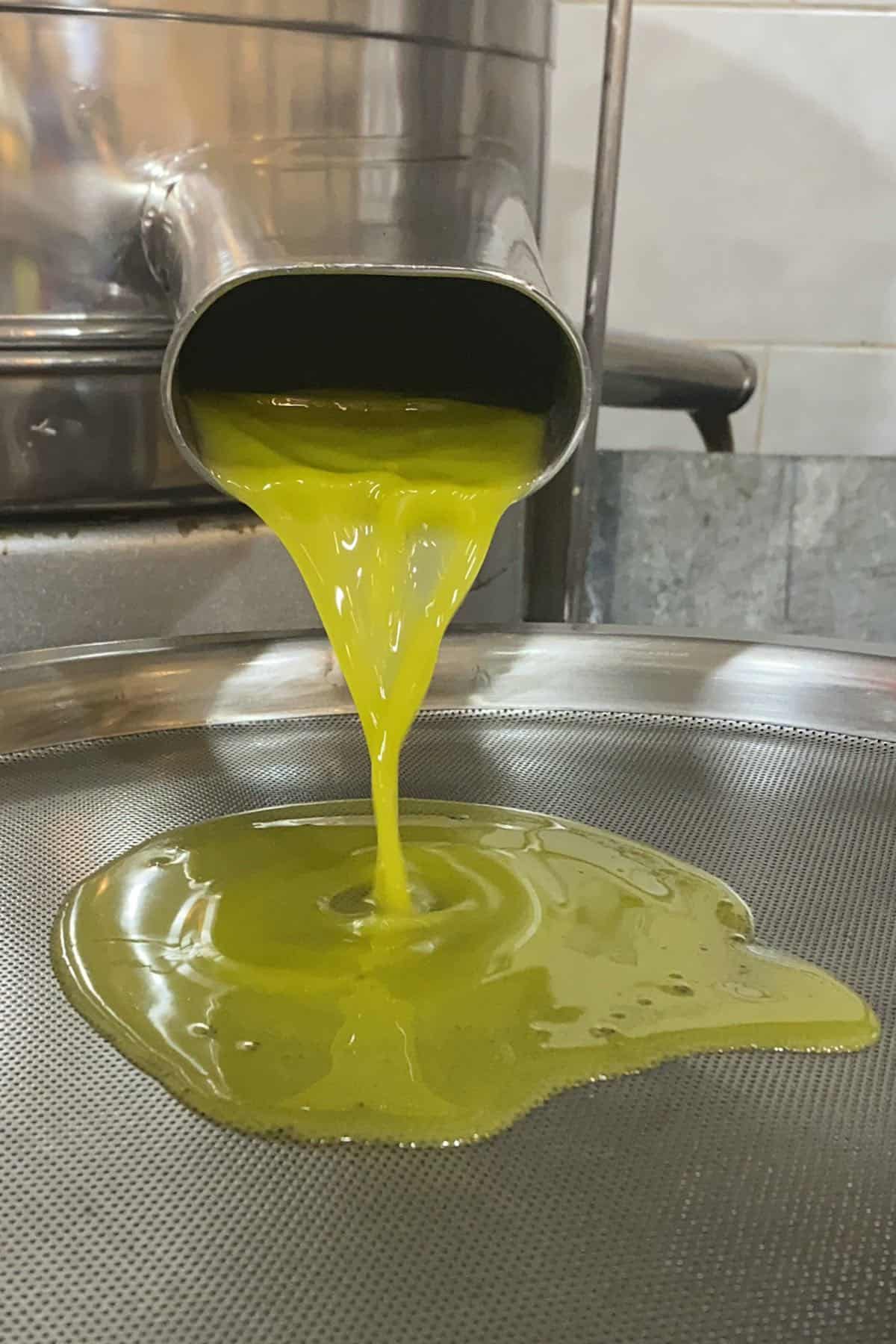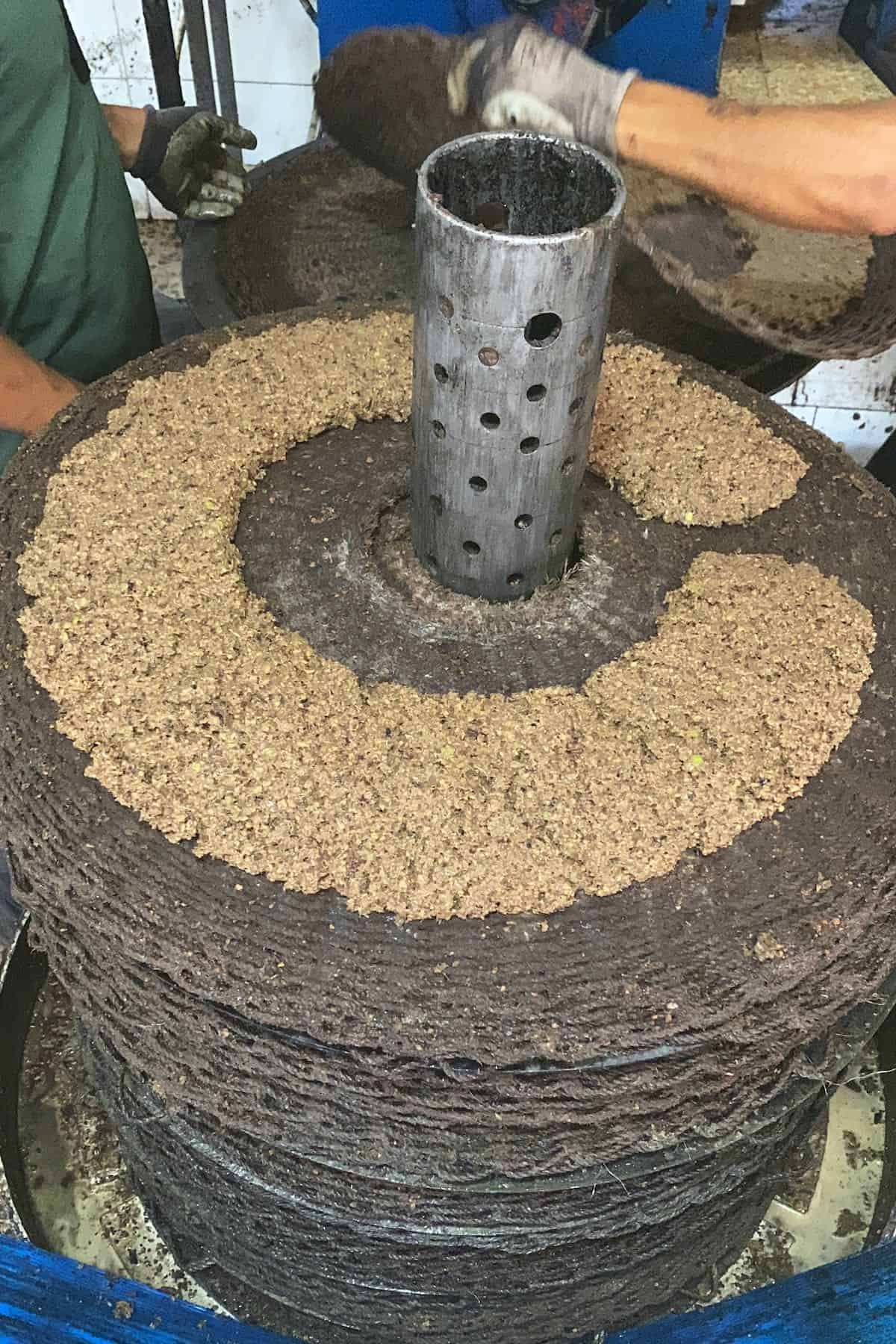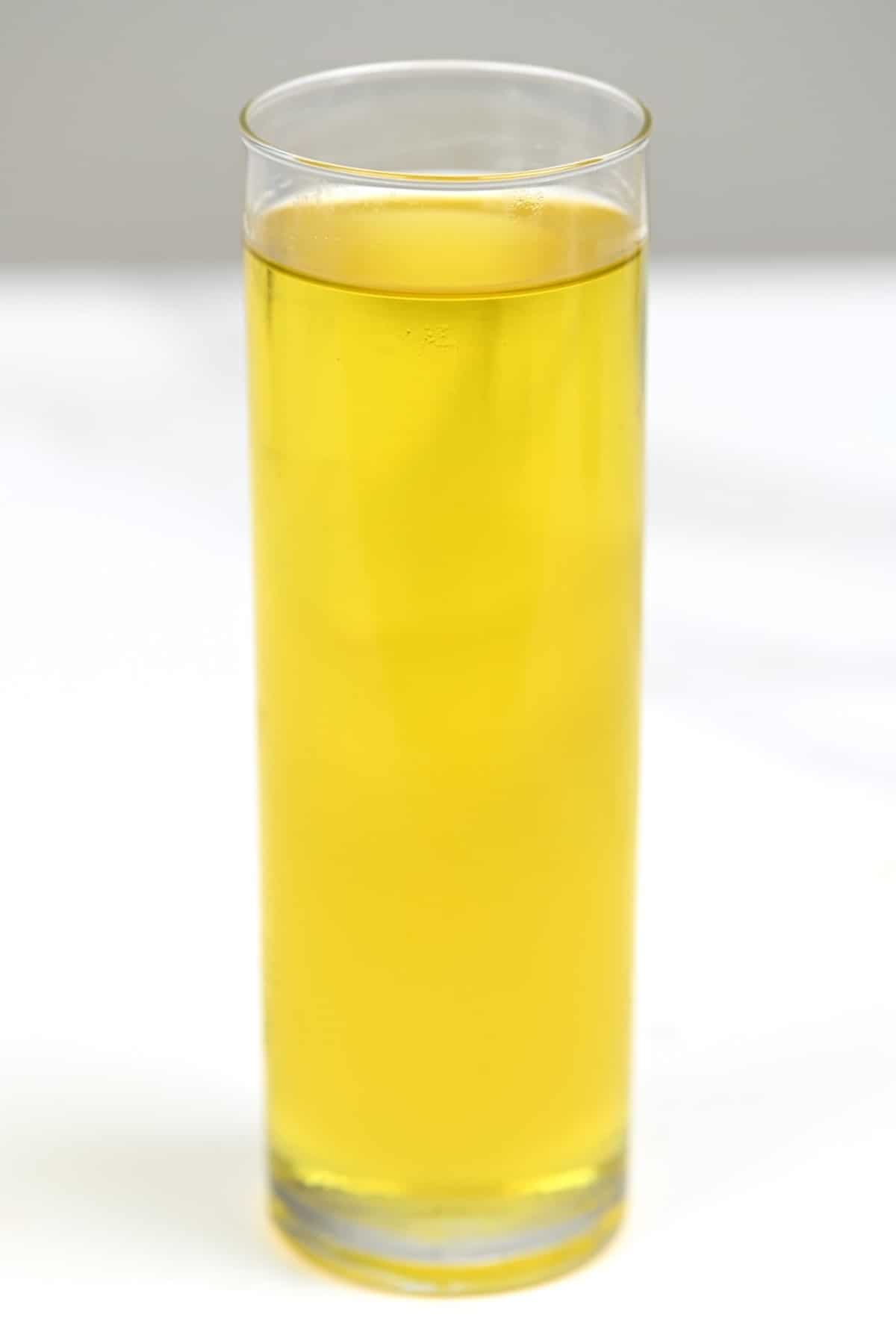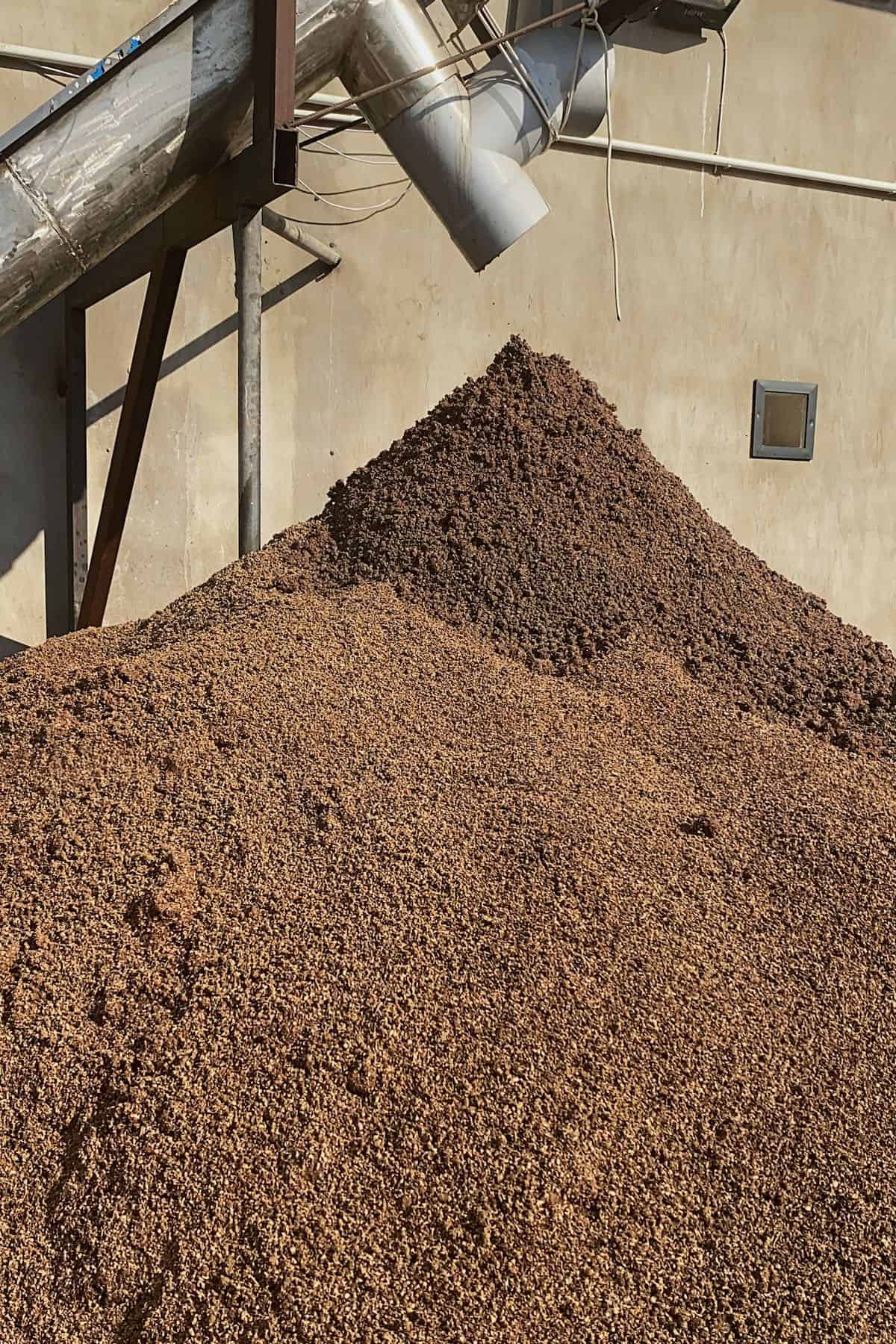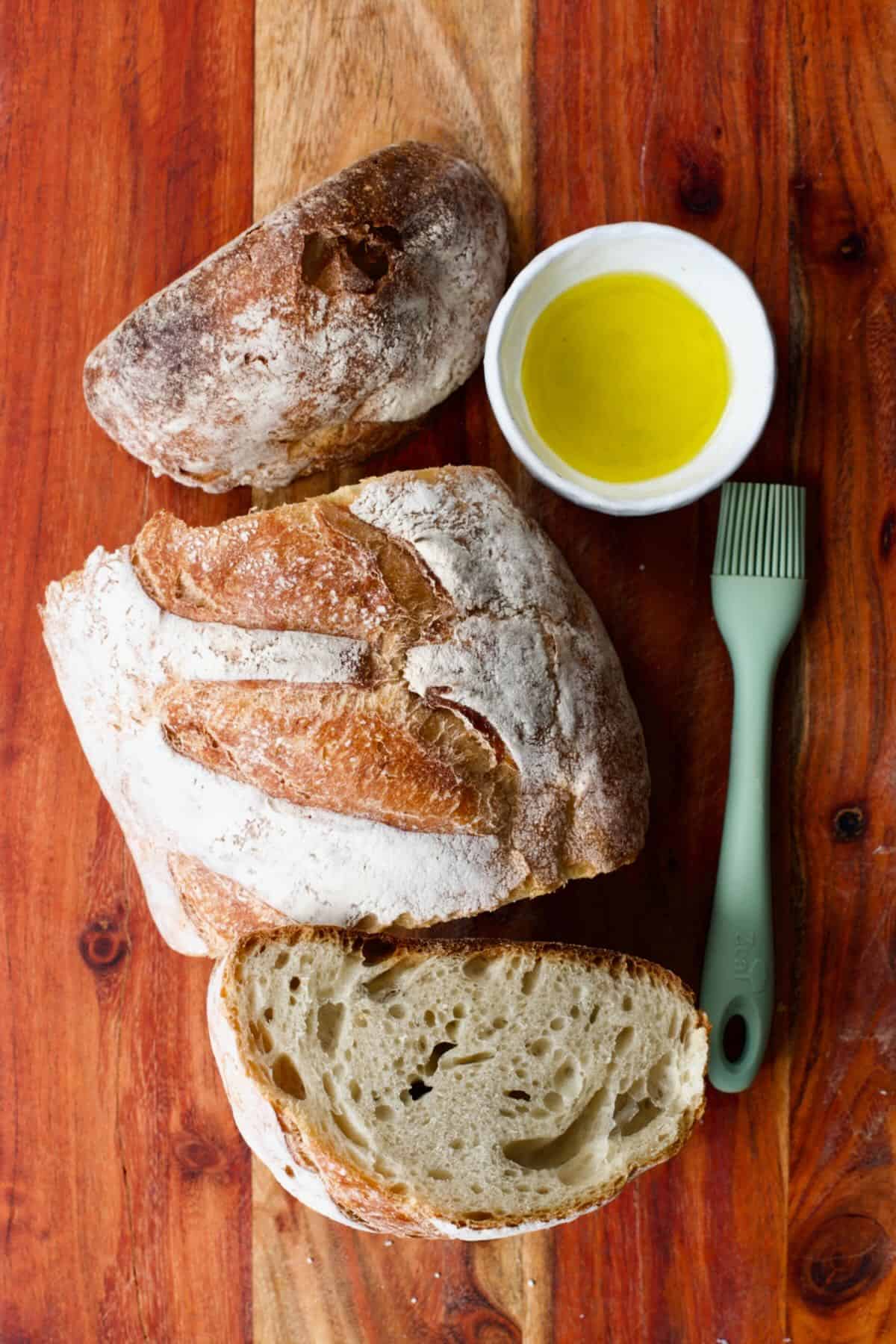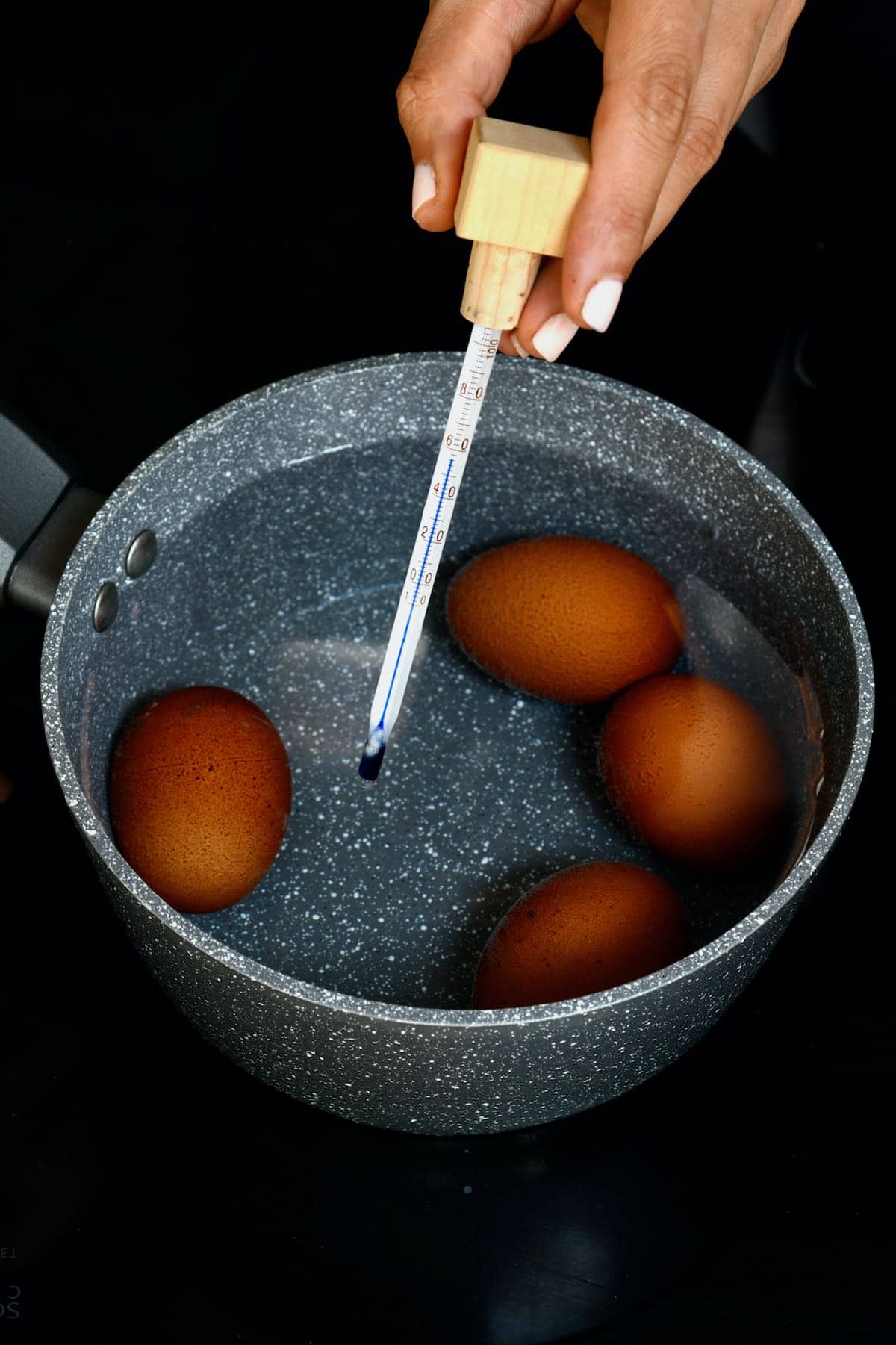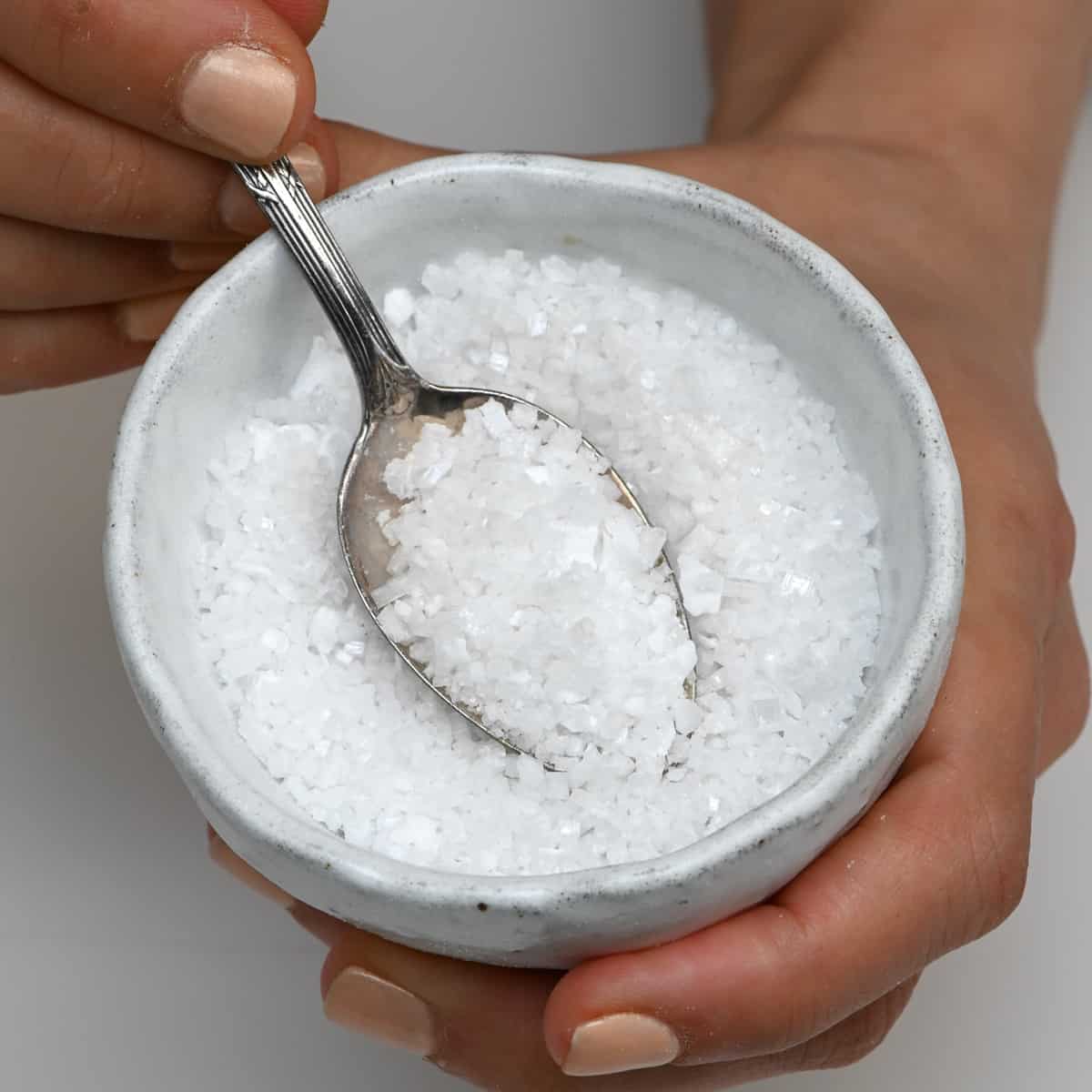If you follow my kitchen DIY series, you may have noticed that I’ve already shared at-home processes to make extra virgin coconut oil and avocado oil. Well, olive oil has always been on my list, but I have yet to perfect my at-home method. However, following a recent trip to Lebanon, I visited an olive oil factory and saw (and took part in) the entire process. Having asked on Instagram, everyone seemed really excited about having this written up in a post ready to compare to the homemade version (when it comes), so ask, and you shall receive!
What is Olive Oil (and the Various Types)?
Olive oil is simply the fat extracted from olives, commonly used for cooking, cosmetic, and pharmaceutical purposes. The actual composition and flavor of the oil varies thanks to several factors, including the altitude, harvest time and method, time between harvest and pressing, and of course, the cultivar (the type of olive tree used). The olive cultivar has the most significant impact on the final product, though, impacting the flavor, texture, color, and even shelf-life. Several main countries produce the majority of the global olive oil, with Spain accounting for almost half! Others include Greece, Italy, Turkey, and Tunisia. Unsurprisingly, these countries also consume the highest amounts of olive oil, too. Olive oil is considered a staple of Mediterranean cuisine.
Extra Virgin Olive Oil vs Olive Oil?
There are four broad categories of olive oil, including refined, virgin, and extra virgin, and olive pomace oil.
Extra virgin olive oil: this is the highest grade of virgin olive oil, made using a cold process without any refining methods or solvents. Thus, it contains less than 0.8% free acidity (a parameter used to rank the quality of olive oil; the lower, the better). This olive oil is the least processed, with the best flavor (often with a “fruitiness”/spiciness and “full-bodied” flavor). Virgin olive oil: virgin olive oil describes any oil made using mechanical and not heat or chemical treatments. In terms of free acidity, they should contain less than 2.0%. Virgin olive oils contain the highest levels of polyphenols, too. This is the antioxidant responsible for most of its health benefits.
All virgin oils will be made through the first pressing of the olive pulp. They won’t go through any further processing or contain any refined oils.
Refined olive oil: olive oil that has been refined to remove taste, color, and odor. The refining process usually uses a combination of chemicals, charcoal, and other filters. Many products labeled as “pure” olive oil are usually primarily refined olive oil with a small percentage of virgin olive oil (for better flavor). Due to the processing, these usually have a free acidity of around 0.03% with a very mild flavor. Olive pomace oil: this oil is extracted from the pulp left over AFTER pressing it for olive oil (as there is usually 5-10% remaining in the pulp). As it’s hard to extract, there are solvents and other techniques used to do so. The crude oil is usually then combined with virgin oil for better flavor. This oil also has a higher smoke point, so it is sometimes used within restaurants. However, it also lacks the flavor and healthful properties of virgin olive oils.
In terms of extra virgin olive oil vs olive oil: EVOO is made with pure, cold-pressed olives and unrefined. In comparison, regular olive oil is usually a blend of processed and virgin olive oil. This impacts the color (often lighter), flavor (more neutral), and health benefits (losing a lot of vitamins and antioxidants in the refining process). You can read more about the distinctions between the various olive oils, including the color and taste, here!
What is the Smoke Point of Olive Oil?
This will vary based on which category of olive oil you’re using. For example:
Refined: around 410ºF/210ºC Virgin: around 420ºF/215ºC Extra Virgin: around 375-420ºF/190-215ºC Olive pomace oil: around 445-465ºF/230-240ºC.
What are the Health Benefits of Extra Virgin Olive Oil?
Extra virgin olive oil is a staple of the Mediterranean diet and is known for its plentiful health benefits. But what exactly are they?
Olive oil is packed with antioxidants and nutrients – including modest amounts of vitamin E and K, as well as antioxidants. These help to fight inflammation, protect against harmful free radicals, and can reduce the risk of various chronic diseases (including heart disease, cancer, type 2 diabetes, Alzheimer’s, arthritis, etc.). In fact, one study shows that around 50ml of EVOO may have a similar effect on our bodies as a 10% dose of Ibuprofen (an anti-inflammatory). Olive oil is rich in heart-healthy fats – including monounsaturated fats (oleic acid), which make up almost 75% of the oil (11% are polyunsaturated omega fatty acids, and about 14% are saturated fats). In addition, oleic acid is an anti-inflammatory and contains several beneficial effects, including a reduced risk of strokes. More so, olive oil may be beneficial to heart health. Not only through its anti-inflammation, but it also stops “bad” LDL cholesterol from oxidization and can prevent excessive blood clotting. It also lowers blood pressure by significant levels and can improve blood vessel health. It contains antibacterial properties, which can inhibit/kill harmful bacteria in the stomach.
You can read more about extra virgin olive oil benefits here! Just note that extra virgin olive oil is needed to reap the most benefits from this oil. Therefore, it’s best to avoid refined versions.
How to Make Olive Oil?
Step 1: The Olives are Harvested
Large sheets are placed underneath the trees first to capture all the olives. The workers then use large bamboo canes (raccattatura) to shake and strike the tree, to cause the olives to drop down onto the sheets. This method requires quite a bit of arm power but is MUCH more efficient than trying to pick the olives from the tree individually. Some of the leaves will come down with the olives – this is normal and will be filtered out in further steps. However, a quick general separation (removing the largest leaves/branches) is done at this point. There are also mechanical methods of harvesting the olives used at larger factories (using a machine that “combs” the trees with blades with “teeth” and/or methods that vibrate the trees to cause the olives to drop). The mechanical options are obviously more costly but will cause less bruising to the olives for higher-quality oil. All methods aim to transport the olives to the mill in absolute minimal time for ultimate freshness and to avoid damage/bruising to the olives that will cause oxidization and negatively impact the flavor.
Step 2: Clean and Grind the Olives
First, the olives go through a wash and filtering process, where they are cleaned and any remaining leaves will fall through cracks in the grates. After washing the olives, they are added to large wet grinder machines (similar to the small grinder used when making chocolate). This machine uses two large wheels to crush and grind the olives into a paste. Water is often added to the paste at this point to help create a smoother paste (called malaxation). This churning process helps to start the process of oil extraction, making the next step easier. This is usually done for between 20-40 minutes. The longer grinding time allows the flavors from the paste to develop in the oils. However, it shouldn’t be done for too long, or the oxidization can negatively impact the quality. In some factories, there are now griding processes that happen in closed chambers. The chambers are filled with a harmless gas that helps prevent oxidization and preserve the quality of the oil. Lightly heating the paste can help to increase the yield of the oil from the pulp. However, it must remain below 82ºF/27.8ºC to remain a “virgin” oil and count as cold-pressed.
Step 3: Press the Olives
At this point, there are two ways to extract the olive oil. The first is automated, and the second is a manual method using a hydraulic press. In the first, the olive paste is passed through a decanter (a centrifuge), which rotates the paste at very high-speeds (7500RPM). That way, the oil, water, and solids (pits, flesh, skin) are separated and filtered out of the machine separately. This fresh oil has a very vibrant, almost lime-green color and is the purest form of EVOO. The flavor is strong (in my opinion, it tastes like drinking olives – and I love it!). In the second method, the olive oil is spread (manually) over layers of mats (like burlap/rope). Those layers of pulp are then mechanically pressed, and the oil is squeezed out, running down the stacked layers of material into a vat below. What is the difference between the two? The main difference is that the centrifuge allows for better oil extraction and separation of the oil and water than the simpler press.
Step 4: Refining the Olive Oil
Any further processing of the olive oil is what will turn EVOO and VOO into regular olive oil. Through chemical and heat processes, the oil can be refined, bleached, and/or deodorized – which can help reduce the bitter taste and acidity in the oil and remove any small particles or water remaining in the oil. The bleaching process will have a significant impact on the nutritional value of the oil, as it removes the carotenoids in the oil. At this point, the oils are refined into light and extra-light olive oil (impacting the odor and taste). The remaining olive pulp (called pomace) is also often further refined to extract all remaining oil (around 7-10% remains in this).
Step 5: Bottling the Olive oil
When the olive oil is ready to bottle, it is transferred to large stainless-steel tanks (to block out light and keep the oil fresh) before being decanted into the bottles (often colored glass to block out the sun and avoid the oil becoming rancid sooner than necessary). The remaining paste and leaves are also collected, dried, and used for chimneys (fireplace) – it’s amazing catalyst.
What Can I use Extra Virgin Olive Oil For?
I could write an entire blog post on this topic alone. Instead, I’ll try to keep this list brief. Here are some of my top ways to enjoy EVOO, though:
As a bread dipping oil (either alone or mixed with a rich vinegar for extra flavor). To make the base for salad dressings and vinaigrettes. Drizzle over soups as a garnish or use in soups and stews – like this Lebanese Green Beans (Loubieh Bi Zeit) or Greek “Ladera” style dishes (which serve foods swimming in olive oil). Add into marinades and sauces. Use to sauté vegetables and to drizzle over cooked vegetables, pasta, and grains (like quinoa or brown rice) – for flavor. Drizzled over cheese for mezze dishes or over roasted feta pasta bakes. Added into dips – like hummus or whipped labneh, etc. To make pesto – like this classic Italian green pesto or vegan pistachio pesto. Mix into mashed potatoes in place of butter. Used for cured ingredients – like makdous (cured mini eggplant). With baked goods (like cakes, cookies, muffins, and quick breads baked below 375ºF/190ºC). To cook with tomatoes. Tomatoes cooked with EVOO are absolutely packed with health benefits, as the oil helps to increase the absorption of all the health “goodies” in tomatoes.
Olive oil is also great for balancing the flavor of high-acid foods like tomatoes, wine, vinegar, and citrus. Which makes it a perfect pairing for dishes with those ingredients. Just note that due to the wide variety of flavor and quality in EVOO, and VOO, you may want to use different oils for different uses and recipes. For example, light/mild olive oil has minimal flavor, so it will work well with cooking and baking where neutral flavor is best. Fine virgin olive oil is also a great all-purpose oil for cooking AND using raw as the flavor isn’t too strong.
Can you cook with extra virgin olive oil?
Yes, but with caveats. You may hear people warn you off EVOO due to its low smoking point and the fact that the flavor of the premium EVOO makes it perfect for appreciating while raw. However, there are still several ways you can make use of this oil when cooking. For example, while the lowest smoking point for EVOO may be around 375ºF/190ºC (sometimes slightly lower), pan-frying and deep-frying are both usually around 356ºF/180ºC (the first being even lower). Likewise, many baked/roasted recipes will be at a temperature at or lower than 375ºF/190ºC. This means it’s perfectly fine to use your EVOO for all three – though I would tend to use a different option for deep-frying due to flavor and as the smoking point can sometimes be slightly lower than 375ºF/190ºC.
Can you fry with extra virgin olive oil?
Following on from the above – yes, you can! If you’re nervous about going above the smoking point temperature, make sure to use a thermometer. Otherwise, you’re good to go with shallow and deep frying. Though I don’t recommend it for the latter for the reason listed above as well as its price.
How many olives to make olive oil?
You’ll need between 6-10 kg to make 1 liter of oil (13-22 lb to make 34 Fl oz.) The exact amount will depend on the season, altitude, amount of rain, and the cultivar. Not to mention the production method.
Is all extra virgin olive oil the same?
Not at all. In fact, olive oil is a bit like wine. There are tons of varieties, and the taste can vary (rather dramatically at that), including milky, semi-fruity, and fruity EVOO, some also have peppery/spicy flavors.
How to store olive oil?
As with most oils, the aim is to reduce contact with heat, air, and light to make the most of its shelf life and avoid rancidity. Unfortunately, in the case of olive oil, rancidity can begin before we can even taste or smell it. At this point, the oil can create harmful free radicals, which are extremely unhealthy for our bodies. The best way to store your olive oil is in a dark glass or non-reactive metal container stored in a cool, dark location away from your oven. If I have a lot in storage, I’ll often keep the majority in the fridge (not including premium extra-virgin olive oils), keeping a small airtight glass jar at room temperature for the small amount I’m currently using (and will top that up incrementally). When refrigerated, the oil will solidify and turn cloudy, this is normal.
Can I use EVOO instead of butter in baked recipes?
Yes, in fact, I quite like this substitute as it adds extra nutrients and a little extra flavor. In terms of ratio, I recommend using 1:3/4 butter to olive oil (i.e., for every tablespoon of butter, use ¾ tablespoon). Best used within recipes that call for melted butter.
How much olive oil per day should you consume?
I think it’s hard to list an “ideal” amount, as it will vary by individual. However, in general, 1.5-2 tablespoons per day seems a great amount for those looking to improve gut health, mental health, immune health, and heart health (increase to 3-4 Tbsp). Just make sure that it’s extra virgin olive oil that you’re consuming.
What is the smoke point of extra virgin olive oil?
The smoke point of extra virgin olive oil is around 375-420ºF/190-215ºC. However, this varies based on several factors.
Avocado oil vs olive oil?
Both avocado oil (more benefits here) and olive oil are some of the healthiest oils available. They are both heart-healthy, antioxidant-rich, beneficial to skin health, and anti-inflammatory. In terms of nutritional composition, both oils are incredibly similar, with a single tablespoon containing almost identical calories and levels of fat. Where they differ is that avocado oil contains slightly more polyunsaturated fat, whereas EVOO contains slightly more vitamin E (thus more antioxidants). Avocado oil also has a higher smoke point (at around 482ºF/250ºC), making it the preferable choice for high heat cooking. Otherwise, the two are both healthy additions to your diet.
Are black olives and green olive the same?
Green olives are actually the unripe version (with a more robust/bitter flavor) of olives. Meanwhile, black olives are ripe.
What olives are used for olive oil?
You can use black or green olives to make olive oil. However, green olives are usually prefered as they provide more flavor.
Cooking DIYs and Information Posts on the Blog
Baking soda vs. baking powder How to pasteurize eggs Homemade flaky salt How to make bulgur wheat at home Homemade baking powder How to make powdered sugar
If you enjoyed this post on how olive oil is made, I’d love to hear your thoughts/questions below. Also, I’d appreciate a recipe card rating below, and tag me in your recipe recreations on Instagram @Alphafoodie!
